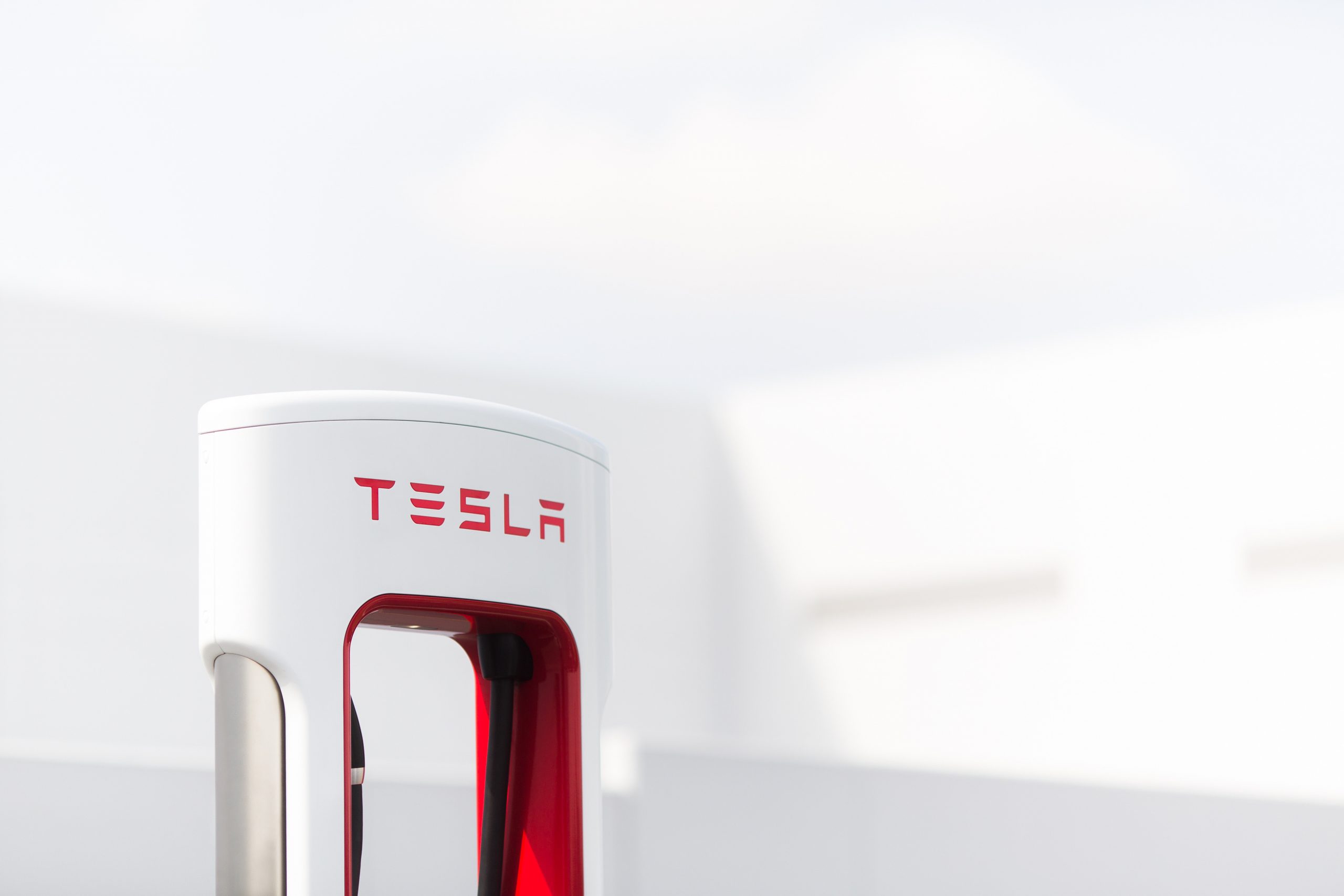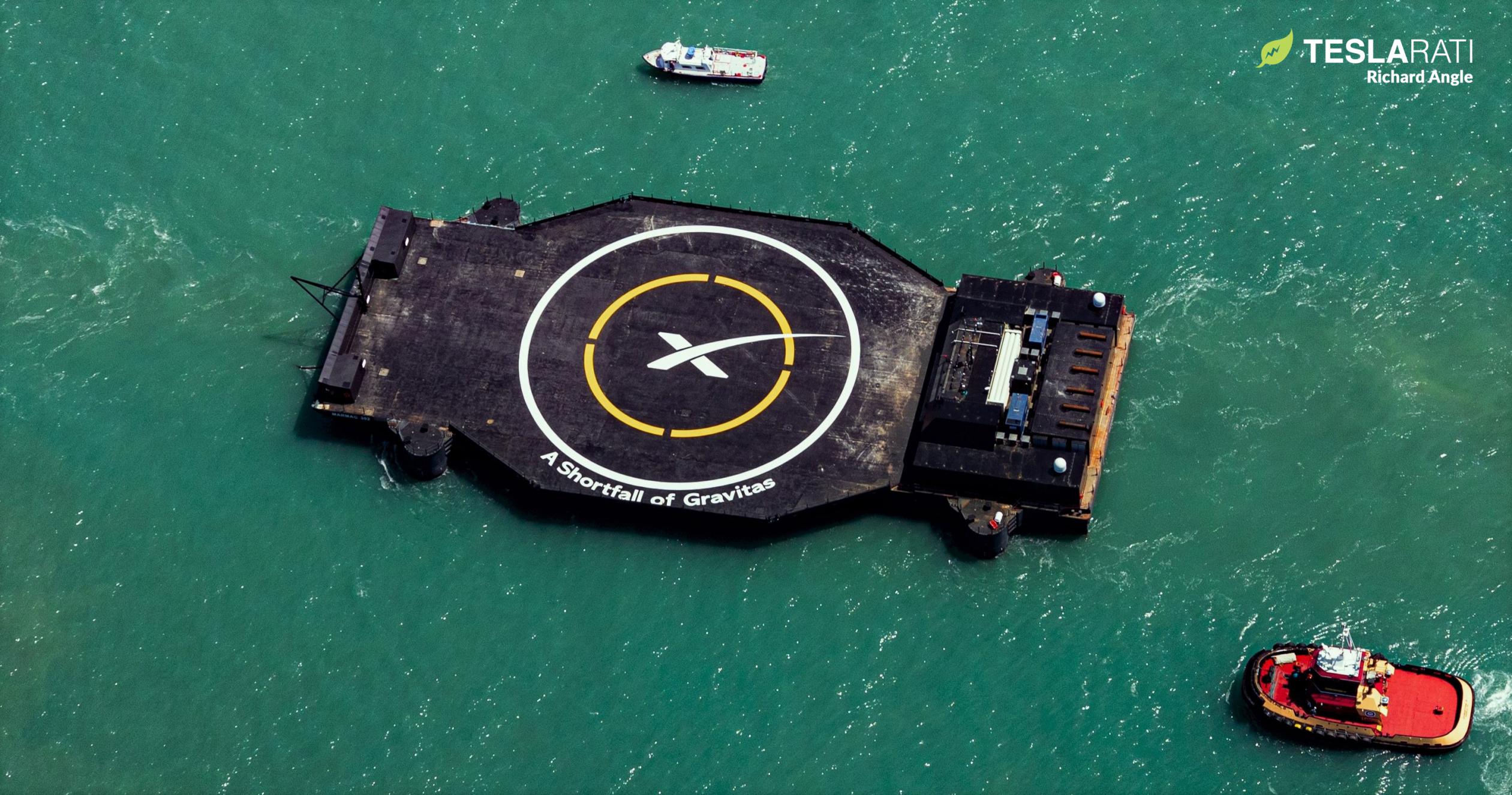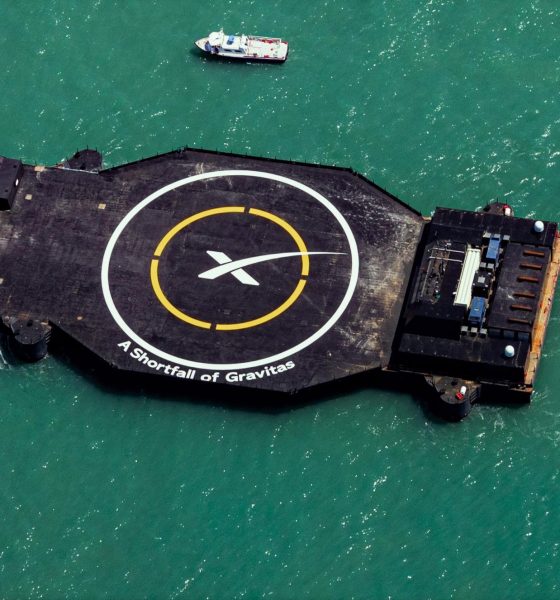SpaceX’s newest drone ship is on its way out into the Atlantic Ocean for a Starlink mission that will break the company’s record for annual launch cadence.
Somewhat confusing known as Starlink Shell 4 Launch 3 or Starlink 4-3, the batch of 53 laser-linked V1.5 satellites is scheduled to fly before Starlink 4-2 for unknown reasons and at the same time as Starlink 2-3 is scheduled to fly before Starlink 2-2 on the West Coast. Regardless of the seemingly unstable launch order, perhaps related to the recent introduction of Starlink’s new V1.5 satellite design, drone ship A Shortfall of Gravitas’ (ASOG) November 27th Port Canaveral confirms that SpaceX is more or less on track to launch Starlink 4-3 no earlier than (NET) 6:20 pm EST (23:20 UTC) on Wednesday, December 1st.
In a bit of a return to stride after launching 20 times in the first six months but only three times in the entire third quarter of 2021, Starlink 4-3 is currently the first of four or even five SpaceX launches scheduled in the last month of the year. Nevertheless, if Starlink 4-3 is successful, it will also set SpaceX up to cross a milestone unprecedented in the history of satellite launches.
Specifically, Starlink 4-3 is SpaceX’s 16th dedicated Starlink launch of 2021 and will mark 951 Starlink satellites safely delivered to orbit since January 20th. If, as CEO Elon Musk has telegraphed is the plan, SpaceX intends to complete one more dedicated Starlink launch in December (either Starlink 2-2 or 2-3), the company could round out 2021 having launched more than a thousand satellites in a single year.
Thanks to Starlink, 2020 was the first year in history in which more than a thousand satellites (technically 1283) were launched into orbit. Now, in 2021, there’s a good chance that SpaceX Starlink launches alone will account for more than a thousand satellites launched in one year. Altogether, SpaceX will likely end the year having singlehandedly launched a total of more than 1240 satellites in 2021 – and despite only completing 3-4 Starlink launches in the last seven months of the year compared to 13 in the first five months.
For SpaceX and Starlink, that’s great news. In March and November 2018, the FCC approved two SpaceX applications to launch and operate constellations of ~4400 and ~7500 Starlink satellites – a total of around 11,900 satellites. To avoid having its licenses revoked, SpaceX – like all other FCC constellation applicants – is required to launch half of its licensed constellation within six years of its license receipts and full constellation within nine years. For SpaceX, that means it has to launch at least ~2200 satellites operating around 550 km (340 mi) and ~3750 satellites operating around 350 km (~220 mi) by March and November 2024, respectively.
With a bit less than 1700 Starlink satellites currently functioning in orbit, even if SpaceX merely repeats its 2021 cadence, it will be on track to outright finish Starlink’s first 4400-satellite phase by mid-2024 and should easily cross the halfway mark by mid-2022 – years ahead of schedule for both. However, simultaneously hitting Starlink’s very low Earth orbit (VLEO) deployment milestones will still be a massive challenge. Given that SpaceX has yet to launch a single VLEO Starlink spacecraft three years after license approval, it now has less than three years to launch ~3750 VLEO satellites on top of at least 500 more LEO satellites.
If SpaceX can replicate its H1 2021 Starlink launch cadence throughout 2022, completing at least 26 launches in 52 weeks, it may actually have a shot at pulling off a cadence close to what is needed to meet its FCC deployment requirements (an average of 1400 satellites per year for the next three years). If SpaceX simply aims for the average annual numbers needed to complete the full ~11,900-satellite Starlink constellation by November 2027, it will need to launch around 1800-2000 satellites per year – equivalent to 35-40 Falcon 9 rockets.

News
Tesla FSD’s newest model is coming, and it sounds like ‘the last big piece of the puzzle’
“There’s a model that’s an order of magnitude larger that will be deployed in January or February 2026.”

Tesla Full Self-Driving’s newest model is coming very soon, and from what it sounds like, it could be “the last big piece of the puzzle,” as CEO Elon Musk said in late November.
During the xAI Hackathon on Tuesday, Musk was available for a Q&A session, where he revealed some details about Robotaxi and Tesla’s plans for removing Robotaxi Safety Monitors, and some information on a future FSD model.
While he said Full Self-Driving’s unsupervised capability is “pretty much solved,” and confirmed it will remove Safety Monitors in the next three weeks, questions about the company’s ability to give this FSD version to current owners came to mind.
Musk said a new FSD model is coming in about a month or two that will be an order-of-magnitude larger and will include more reasoning and reinforcement learning.
He said:
“There’s a model that’s an order of magnitude larger that will be deployed in January or February 2026. We’re gonna add a lot of reasoning and RL (reinforcement learning). To get to serious scale, Tesla will probably need to build a giant chip fab. To have a few hundred gigawatts of AI chips per year, I don’t see that capability coming online fast enough, so we will probably have to build a fab.”
NEWS: Elon Musk says FSD Unsupervised is “pretty much solved at this point” and that @Tesla will be launching Robotaxis with no safety monitors in about 3 weeks in Austin, Texas. He also teased a new FSD model is coming in about 1-2 months.
“We’re just going through validation… https://t.co/Msne72cgMB pic.twitter.com/i3wfKX3Z0r
— Sawyer Merritt (@SawyerMerritt) December 10, 2025
It rings back to late November when Musk said that v14.3 “is where the last big piece of the puzzle finally lands.”
With the advancements made through Full Self-Driving v14 and v14.2, there seems to be a greater confidence in solving self-driving completely. Musk has also personally said that driver monitoring has been more relaxed, and looking at your phone won’t prompt as many alerts in the latest v14.2.1.
This is another indication that Tesla is getting closer to allowing people to take their eyes off the road completely.
Along with the Robotaxi program’s success, there is evidence that Tesla could be close to solving FSD. However, it is not perfect. We’ve had our own complaints with FSD, and although we feel it is the best ADAS on the market, it is not, in its current form, able to perform everything needed on roads.
But it is close.
That’s why there is some legitimate belief that Tesla could be releasing a version capable of no supervision in the coming months.
All we can say is, we’ll see.
Investor's Corner
SpaceX IPO is coming, CEO Elon Musk confirms
However, it appears Musk is ready for SpaceX to go public, as Ars Technica Senior Space Editor Eric Berger wrote an op-ed that indicated he thought SpaceX would go public soon. Musk replied, basically confirming it.

Elon Musk confirmed through a post on X that a SpaceX initial public offering (IPO) is on the way after hinting at it several times earlier this year.
It also comes one day after Bloomberg reported that SpaceX was aiming for a valuation of $1.5 trillion, adding that it wanted to raise $30 billion.
Musk has been transparent for most of the year that he wanted to try to figure out a way to get Tesla shareholders to invest in SpaceX, giving them access to the stock.
He has also recognized the issues of having a public stock, like litigation exposure, quarterly reporting pressures, and other inconveniences.
However, it appears Musk is ready for SpaceX to go public, as Ars Technica Senior Space Editor Eric Berger wrote an op-ed that indicated he thought SpaceX would go public soon.
Musk replied, basically confirming it:
As usual, Eric is accurate
— Elon Musk (@elonmusk) December 10, 2025
Berger believes the IPO would help support the need for $30 billion or more in capital needed to fund AI integration projects, such as space-based data centers and lunar satellite factories. Musk confirmed recently that SpaceX “will be doing” data centers in orbit.
AI appears to be a “key part” of SpaceX getting to Musk, Berger also wrote. When writing about whether or not Optimus is a viable project and product for the company, he says that none of that matters. Musk thinks it is, and that’s all that matters.
It seems like Musk has certainly mulled something this big for a very long time, and the idea of taking SpaceX public is not just likely; it is necessary for the company to get to Mars.
The details of when SpaceX will finally hit that public status are not known. Many of the reports that came out over the past few days indicate it would happen in 2026, so sooner rather than later.
But there are a lot of things on Musk’s plate early next year, especially with Cybercab production, the potential launch of Unsupervised Full Self-Driving, and the Roadster unveiling, all planned for Q1.
News
Tesla adds 15th automaker to Supercharger access in 2025

Tesla has added the 15th automaker to the growing list of companies whose EVs can utilize the Supercharger Network this year, as BMW is the latest company to gain access to the largest charging infrastructure in the world.
BMW became the 15th company in 2025 to gain Tesla Supercharger access, after the company confirmed to its EV owners that they could use any of the more than 25,000 Supercharging stalls in North America.
Welcome @BMW owners.
Download the Tesla app to charge → https://t.co/vnu0NHA7Ab
— Tesla Charging (@TeslaCharging) December 10, 2025
Newer BMW all-electric cars, like the i4, i5, i7, and iX, are able to utilize Tesla’s V3 and V4 Superchargers. These are the exact model years, via the BMW Blog:
- i4: 2022-2026 model years
- i5: 2024-2025 model years
- 2026 i5 (eDrive40 and xDrive40) after software update in Spring 2026
- i7: 2023-2026 model years
- iX: 2022-2025 model years
- 2026 iX (all versions) after software update in Spring 2026
With the expansion of the companies that gained access in 2025 to the Tesla Supercharger Network, a vast majority of non-Tesla EVs are able to use the charging stalls to gain range in their cars.
So far in 2025, Tesla has enabled Supercharger access to:
- Audi
- BMW
- Genesis
- Honda
- Hyundai
- Jaguar Land Rover
- Kia
- Lucid
- Mercedes-Benz
- Nissan
- Polestar
- Subaru
- Toyota
- Volkswagen
- Volvo
Drivers with BMW EVs who wish to charge at Tesla Superchargers must use an NACS-to-CCS1 adapter. In Q2 2026, BMW plans to release its official adapter, but there are third-party options available in the meantime.
They will also have to use the Tesla App to enable Supercharging access to determine rates and availability. It is a relatively seamless process.










